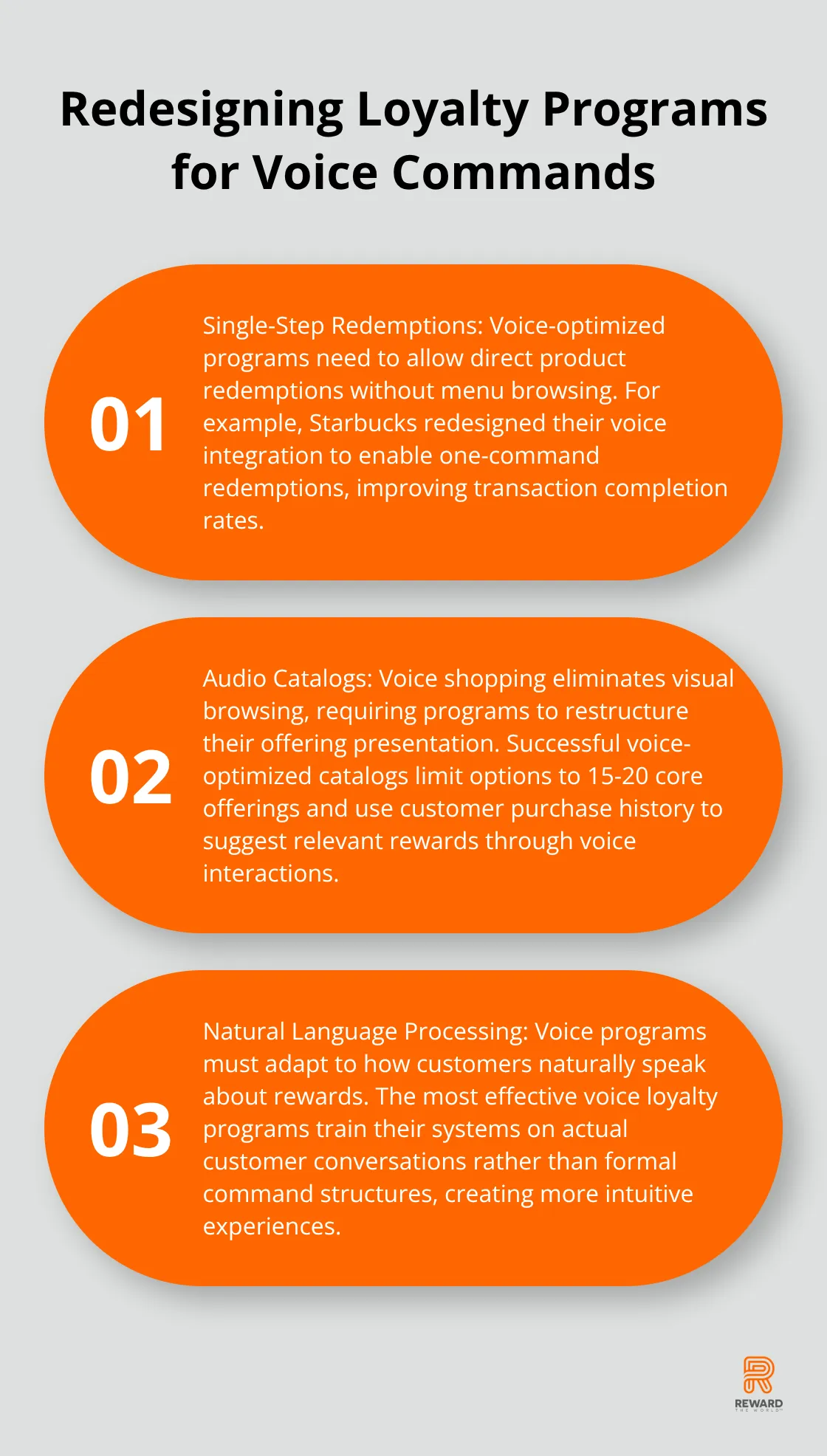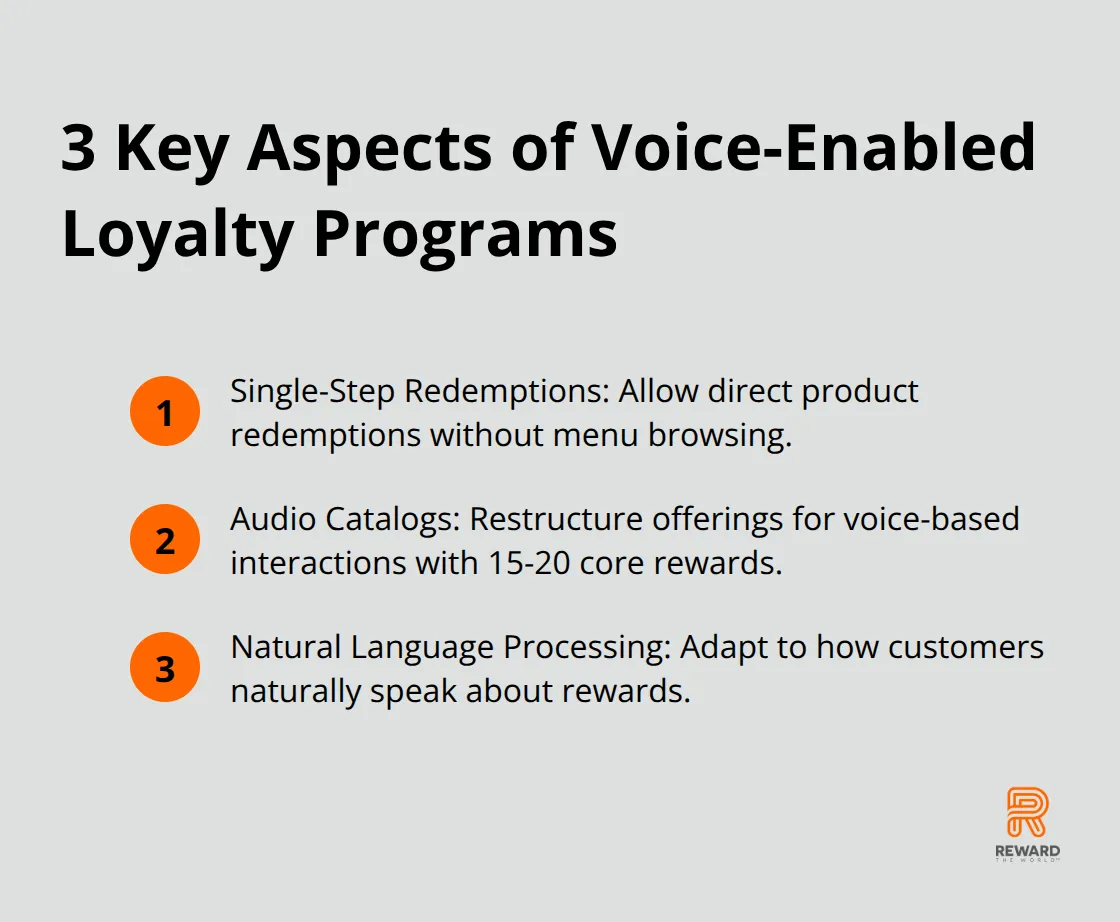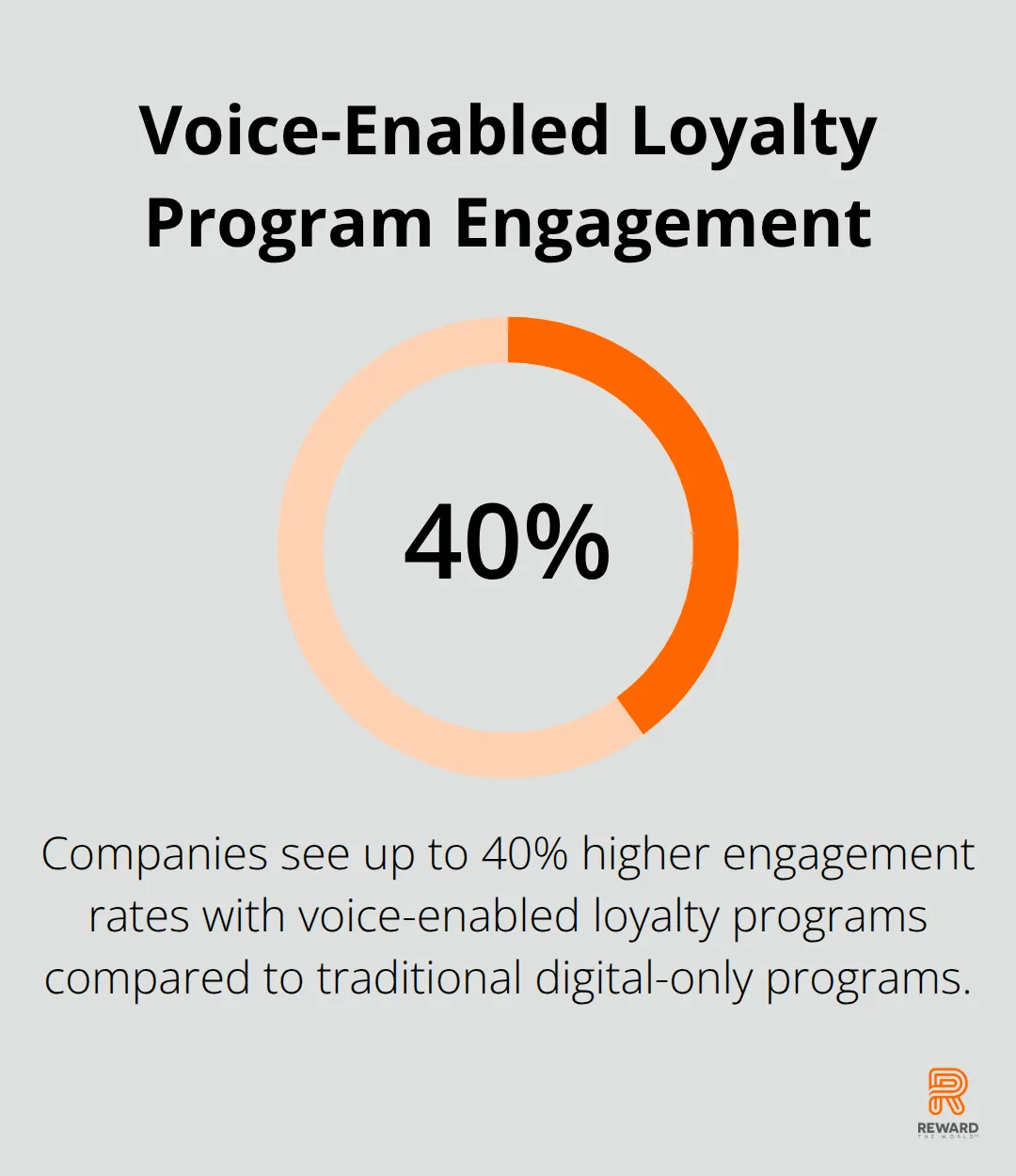
Voice shopping is transforming how customers interact with brands, with Amazon reporting over 100 million Alexa devices sold worldwide. Traditional loyalty programs struggle to adapt to this shift.
We at Reward the World see voice rewards as the next frontier for customer engagement. Smart speakers and voice assistants are changing redemption expectations completely.
Why Voice Commerce Integration Matters Now
The global voice commerce market reached $42.75 billion in 2023 and will hit $186.28 billion by 2030, with annual growth at 24.6% according to Grand View Research. North America leads with 37% market share, while smart speakers command 44% of voice transactions. This explosive growth forces loyalty programs to adapt quickly or risk obsolescence.

Traditional point-based systems fail when customers expect instant voice redemptions through Amazon Alexa or Google Assistant. The gap between customer expectations and program capabilities widens daily.
Voice Shopping Transforms Customer Behavior
Voice commerce transforms customer behavior patterns completely. Over 75% of U.S. households use voice assistants daily, with 87% who prefer voice shopping for convenience. Customers now expect hands-free reward redemptions, voice-activated balance checks, and audio program updates.
The shift from visual to conversational interfaces eliminates traditional app navigation and creates new engagement opportunities. Routine shopping tasks through voice commands increase program touchpoints, while 50% of consumers already use voice technology for customer service interactions (making voice the preferred channel for quick transactions).
Technical Integration Challenges Block Progress
Voice platform integration presents significant technical challenges that most loyalty providers underestimate. Legacy systems lack API compatibility with Amazon Alexa Skills or Google Actions frameworks. Speech recognition accuracy drops with complex reward catalogs, while natural language processing struggles with varied redemption requests.
Security concerns around voice data handling create compliance hurdles, especially for financial services. Most platforms require complete system overhauls rather than simple add-ons, which makes implementation costs prohibitive for smaller programs. Voice biometric authentication adds another complexity layer that traditional loyalty infrastructure cannot support.
The Competitive Advantage Window Closes Fast
Early adopters gain substantial competitive advantages in voice commerce loyalty. Banks that implement voice rewards see up to 40% higher engagement rates compared to traditional digital-only programs. Voice interactions generate valuable data that provides insights to optimize loyalty offerings continuously.
Companies that delay voice integration risk losing customers to competitors who offer seamless voice experiences. The window for competitive advantage narrows as more brands recognize voice commerce potential and begin their own integration projects.
How Do You Redesign Loyalty Programs for Voice Commands?
Voice-enabled loyalty programs require complete structural redesigns, not simple feature additions. Traditional redemption workflows that depend on visual menus fail completely in voice environments. Programs must transform complex catalogs into conversational flows that work through natural speech patterns. Voice commerce demonstrates generally positive user experiences, with approximately 80% of consumers who have made purchases showing satisfaction, which makes simplicity the top priority for program architects.

Voice Commands Need Single-Step Redemptions
Traditional loyalty programs force customers through multiple screens and confirmation steps that voice technology cannot replicate. Successful voice redemptions happen through single commands like “Redeem coffee reward” rather than navigation through categories and subcategories. Starbucks redesigned their voice integration to allow direct product redemptions without menu browsing, which resulted in improved transaction completion.
Voice-optimized programs eliminate confirmation screens and use audio confirmations instead. The most effective implementations connect reward catalogs directly to product purchasing systems (allowing customers to redeem and order simultaneously through one voice command).
Audio Catalogs Replace Visual Browsing
Voice shopping eliminates visual reward catalogs completely, which forces programs to restructure their entire offering presentation. Audio-based catalogs work through category-based conversations rather than browsing interfaces. Hotels.com restructured their loyalty rewards into five main audio categories with specific voice triggers for each reward type.
Programs that succeed in voice environments limit reward options to 15-20 core offerings rather than hundreds of choices that overwhelm audio interfaces. Smart programs use customer purchase history to suggest relevant rewards through voice interactions (reducing decision complexity). Voice-optimized catalogs prioritize frequently redeemed rewards and eliminate low-value options that complicate audio navigation.
Natural Language Processing Shapes Program Structure
Voice programs must adapt to how customers naturally speak about rewards. People say “Get me a free coffee” instead of “Redeem beverage category reward number 47.” Programs need to map natural language phrases to specific rewards and handle variations in customer speech patterns.
The most successful voice loyalty programs train their systems on actual customer conversations rather than formal command structures. Natural language processing allows AI to comprehend, process, and reply conversationally to voice instructions. These adaptations create more intuitive experiences that feel natural rather than robotic, which sets the foundation for the enhanced engagement benefits that voice technology delivers.
What Real Benefits Do Voice-Enabled Loyalty Programs Deliver?
Voice-enabled loyalty programs transform customer engagement through measurable improvements that traditional programs cannot achieve. Companies that implement voice rewards see up to 40% higher engagement rates compared to traditional digital-only programs, while voice interactions reduce call handling times significantly. These improvements stem from voice technology’s ability to eliminate friction in reward interactions.

Customers redeem rewards through natural speech commands without navigation through complex menus or app downloads, which increases program participation rates significantly. Voice-enabled programs also operate 24/7 without human support staff (customers check balances, redeem rewards, and receive program updates at any time through their smart speakers or voice assistants).
Voice Commands Boost Redemption Rates Through Instant Access
Traditional loyalty programs suffer from low redemption rates because customers forget about accumulated points or find redemption processes too complicated. Voice-enabled programs solve this problem through proactive engagement and simplified access. Smart speakers alert customers about expiration dates for points, suggest relevant rewards based on purchase history, and complete redemptions through single voice commands.
Amazon’s voice commerce platform demonstrates this effectiveness, with routine tasks handled through voice commands that enhance user convenience. Voice technology also enables contextual redemptions during natural conversations (such as automatic loyalty discount applications when customers place voice orders for products they frequently purchase).
Voice Interactions Generate Superior Customer Intelligence
Voice-enabled loyalty programs collect richer customer data than traditional digital interactions because speech patterns reveal emotional states, preferences, and intent more clearly than click-through behavior. Every voice interaction generates valuable data that provides insights to optimize loyalty offers continuously.
Voice analytics identify which rewards customers request most frequently, how they describe products in natural language, and when they prefer to engage with loyalty benefits. This intelligence allows programs to personalize offers more effectively and predict customer needs before they explicitly request specific rewards, which creates anticipatory loyalty experiences that strengthen customer relationships beyond transactional interactions.
Final Thoughts
Voice rewards represent the most significant shift in loyalty program design since mobile apps emerged. Companies that act now gain competitive advantages while late adopters risk customer defection to voice-enabled competitors. The implementation path requires three phases: technical infrastructure development, reward catalog restructuring, and staff training on voice interaction management.
Priority actions start with API integration for major voice platforms, followed by natural language processing implementation for reward redemptions. Programs must simplify their offerings to 15-20 core rewards that work effectively through audio interfaces. Voice biometric authentication and compliance frameworks need immediate attention to meet security requirements.
The future holds immense opportunities as voice commerce reaches $186.28 billion by 2030. Emotional AI will recognize customer sentiment during voice interactions, while IoT integration will enable reward redemptions through connected devices throughout customers’ homes and workplaces (creating seamless experiences across all touchpoints). We at Reward the World provide the technical foundation for voice-enabled loyalty programs through our global incentives platform that supports instant reward delivery.
